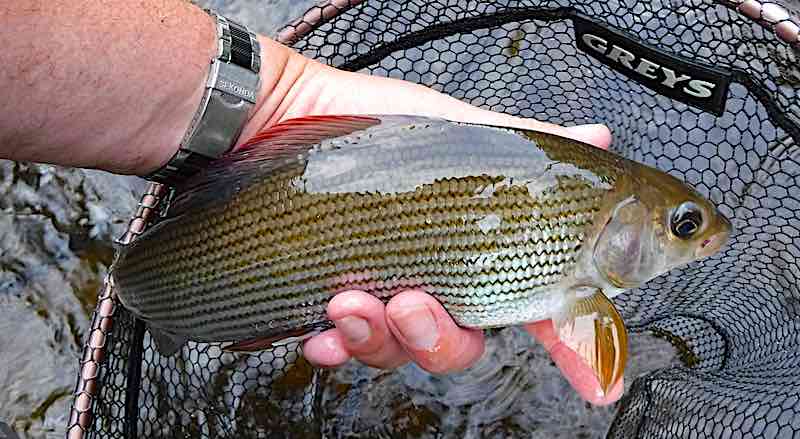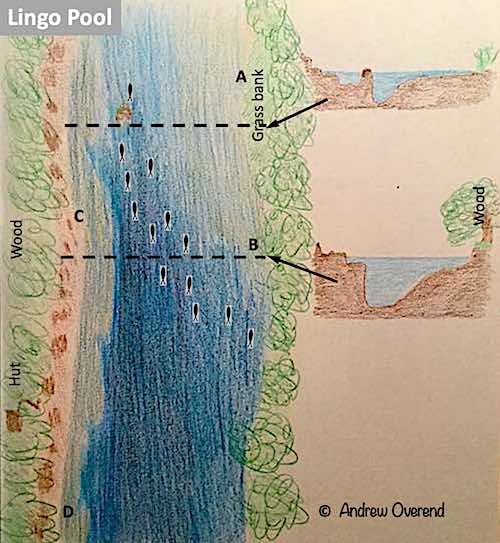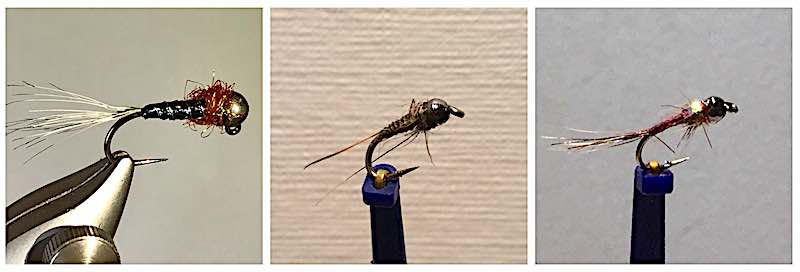Subscribe to my blog
Make your life easier - my blog posts delivered directly to your inbox.
Hawker-Overend Fishing

I’ve produced this fly fishing guide to share my knowledge on how to fish Lingo Pool, which is a pool on Llangollen-Maelor’s angling club beat of the Welsh Dee below Llangollen.
The Lingo Pool holds some good grayling and trout but fly fishing this pool is difficult unless the river is at its summer level (ca. 0.5m Manley Hall gauge). However, it’s a great place to fish in the height of the summer during the day because the river is in the shade.

On a few occasions, I’ve tried fly fishing it for salmon but without any success. Salmon and sea trout are caught each year by anglers spinning and/or worming from the right bank.
Pike and perch also reside in the Lingo Pool and have been caught by anglers spinning and worming for salmon. My son has caught pike and perch while fishing for salmon.


I’ve just started pike fly fishing on reservoirs but fly fishing for river pike is on my to-do list. Therefore, I plan to see if I can catch a pike from the Lingo Pool during the summer.
Anyway, back to game fishing…
The river flows northeast through Lingo but is shaded from the summer sun by the steep-sided, wooded right bank. Making it a great pool for fly fishing during the middle of the day when the sun is glaring.

The Lingo Pool can be accessed from both banks but fly fishing for grayling and trout is best from the left bank.
In 30 years of fly fishing the Welsh Dee at Llangollen, I have only fished the top section of the Lingo Pool for trout and grayling; an oversight that I must rectify.
In this sketch of the Lingo Pool, I’ve highlighted where I normally fish for trout and grayling when the river is at its summer level.
My fly fishing of this pool is limited to the head of the pool from the left bank (points A to B).
On warm sunny days, I start fishing the fast water with a team of wet flies on a floating line tipped with a 12ft leader.
While keeping close to the left bank, cast the wet flies over to the far bank and let them swing around to the dangle.
Adding small upstream mends slows the swing of the flies…
Takes often occur immediately after mending the line.
I fish down to the point where it becomes too deep to wade any further.
The following video clip shows me fly fishing in the top section of the Lingo Pool during the summer with a team of wet flies on a floating line.
After fishing through the run with the wet flies, I normally return to the head of the pool and switch to fishing a team of nymphs.
I use a 10ft 3# rod for nymph fishing the Lingo Pool. Typically, set up to fish a team of 3 nymphs spaced 18″ apart on a 4lb fluorocarbon leader (the total leader length to the indicator is usually about 7 to 8ft).
When the river is running clear during the summer month, I often fish two small nymphs above a heavy pattern. For example:

I start fishing the shallow water at the head of the pool (point A) and fish across to the far bank, making sure the nymphs are just clipping the bottom.
Focus on fishing the area near the large rock close to the far bank. Around which, grayling and trout often lie, especially in the slack water behind it.
Next, I return to the near bank, move downriver about a rod-length, and fish across the river as far as possible. This process is repeated until it’s too deep to wade, i,e. to point B.
Takes normally occur where the riverbed starts to drop away.
Below is a video clip showing how I fish the top section of the Lingo Pool during the summer with a team of nymphs on an Airflo SLN Euro Nymph line.
I can’t remember fishing the Lingo Pool with the dry fly because flies rarely hatch in the middle of a hot sunny day, which is when I usually fish in this pool. That’s not to say you shouldn’t try…
If I was to fish this pool with the dry fly, I would start fishing at point B and work my way upriver. Casting to rising fish or searching the foam lines and areas of slack water with the dry fly.
Fly fishing in March & April
The brown trout fishing season on the Welsh Dee starts on the 3rd of March. Unfortunately, the river level is often too high to go fly fishing on the Lingo Pool, and thus I don’t fish this pool until May.
If the river level was at or below 0.55m (Corwen gauge) then it would be worth a try.
On mild days, hatches of large dark olives and March Browns usually start around 11 am and you will often spot trout picking them off as they drift through this pool. During these hatches, my approach is to target the rising fish with the dry fly (large dark olive or March Brown pattern).
For more information on the fly selection for fishing during March check out the following article:
When April arrives, the weather usually starts to warm up and hatches of Large Dark Olives, March Brown, Grammon and other olives become more prevalent from mid-morning to mid-afternoon. Providing opportunities to catch trout on the dry fly, by matching the hatch.
More information on the fly selection for fishing during April is covered in the following post.
Fly fishing in May:
As the weather warms and dries up during May, fly hatches become prolific and brown trout become egaer to fatten up on the emerging fly life. Examples of flies you will see include:
As a result of all the fly-life, May is when dry-fly and upstream wet-fly fishing produce the best catch results, when you have identified which flies the trout are taking.
Even on sunny days, the fishing can be good from morning to dusk, but the best fishing is often in the morning and evening.

More information on the fly selection for fishing during May is covered in the following post.
Fly fishing during June and September:
When the river is low during the summer months, fast, oxygenated water flowing through the Lingo Pool is a good place to fish. On sunny days, this section of the river will continue to yield grayling and trout all day.
More information on the fly selection for summer is covered in the following posts.
Fly fishing in October:
My attention turns to grayling fly fishing from October to the end of February on the Welsh Dee.
During autumn and winter, river conditions often dominate my grayling fishing activities and I will only fish in this pool if the river is running clear and the level is below 0.5m (Corwen gauge).
During October on the Welsh Dee, fly hatches are still common on most days. The flies you are likely to see hatching include:
October mornings tend to be cool and fly hatches don’t usually start until mid-morning and usually wait until then to fish Lingo Pool with the dry fly or Klink & Dink.
Ideally, it’s best to try and identify the flies that are being taken and tie on a suitable imitation.
If that is not possible, I usually start with a CDC olive emerger pattern that has served me well, and if that doesn’t work I start working through my fly box. However, it’s rare not to catch a grayling on one of the three following patterns:
On rare occasions, it’s not possible to tempt grayling with either of the above approaches, it is necessary to switch to fishing nymphs close to the riverbed.
Check out the link below for additional reading on flies for October:
Fly fishing from November to February:
The clocks go back at the end of October and the days become increasingly shorter during November. At this time of year, the river is often too high to fish the Lingo Pool with the fly.
Therefore, with limited day-light hours, I often fish more productive pools where grayling have started to shoal.
For more information on the flies to use on the Welsh Dee during winter check out the following articles:
I have never fished Lingo Pool for salmon or sea trout with the fly and it’s probably something I should correct.
The deep section of the pool between points C and D is where salmon and probably sea trout hold but it’s difficult to fish with the fly.
Over the years there have been many salmon caught there by anglers spinning and fishing worms.
The Lingo Pool is not that easy to find and access, Therefore, it’s best to use the Club Map for location and parking.
To fish the left bank I park in Llangollen and walk down the A539 towards Wexham, passing the health centre to the sculpture of an acorn. Behind the sculpture, there is a gap in the wall that takes you into a wooded area and down to the river.
To fish the right bank you can access the river opposite Tyn-y-Wern, which is on the A5 heading towards Wrexham.
Fishing, like most outdoor sports, is not without its hazards. Therefore, YOU MUST DO YOUR OWN RISK ASSESSMENT before starting to fish. Especially if you decide to wade and/or fish at night. In addition, you must follow the Llangollen-Maelor Club Rules when accessing and fishing this water.
Subscribe to my blog
Make your life easier - my blog posts delivered directly to your inbox.